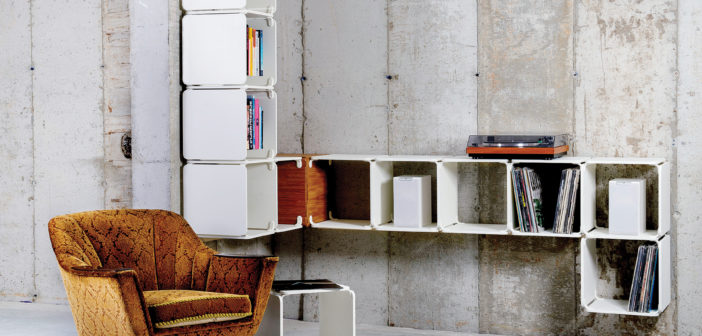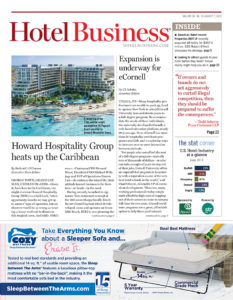INTERNATIONAL REPORT—Casegoods are embracing designs with chameleon-like characteristics, bringing forth elements of adaptability and flexibility as hotel spaces shift and change to meet the needs of today’s travelers.
Looking at the current slate of casegoods with a designer’s mindset, one may notice that many of these pieces are solutions to needs that evolve over time. A nightstand is not just a nightstand when it’s created with connectivity in mind. In terms of functionality, built-in USB ports can give a piece longevity for technological advances to come. Functionality, durability and beauty are key in casegoods.
“The size of casegoods is now smaller as the pieces need to accommodate the needs of today. We have less space, less clothing and our needs are different. Guests need more accessibility to power; it’s an important part of casegoods,” said Antoine Roset, EVP of Roset USA in New York. “It’s not just hiding a fridge behind a cabinet, it’s a piece of the room where you connect all of your devices. We introduce connectivity on top of casegoods, so you have a hub with two USBs on top, and part of the casegood itself is plugged into the wall.”
Some previous iterations of casegoods had the guest reaching behind the furniture to find an outlet, but that time has passed and it’s more about ease of use, according to Roset. “We bring the power to the top of casegoods so you can have your earphones, laptop and cellphone plug in easily. We introduced a system for charging your cellphone by putting it on the sofa. We offer chargers next to the hub and you have a base on top where you put your cellphone. It’s the way we work.”
John McDonald, founder of Semihandmade and MORE Contract, a Los Angeles-based manufacturer of modular hospitality and contract cabinetry, is seeing a shift toward comfort-focused interchangeability at hotels. As pieces become worn, instead of throwing the baby out with the bath water, just give it a diaper change.
“High traffic areas get a lot of use. We’re approaching it with the ability to change components without getting rid of the entire piece. A box can be a TV armoire or you have the ability to swap out its front, top and base,” said McDonald. “If you can swap certain components down the road to freshen things up, I believe there’s a place in the market for that, and that’s where we’re headed. It’s different from what’s out there now. That’s our sweet spot.”
According to Hong Kong-based m.a.d. Furniture Design—helmed by Mark Daniel, Matt Cole and Dan Given—there’s this notion of the handmade through small artisan-like touches, while amping up the cozy factor with materials that add a sense of warmth.
“We’re seeing more hand-carved textures, as well as patinated metallic surfaces such as bronze, acid-etched and burnished steel. These warm metallics are a great counterpoint to the veneered case when used on hardware and legs,” said Daniel, creative director, m.a.d. Furniture Design.
In terms of their work, the team at m.a.d also says to expect the unexpected when it comes to combinations of materials in casegoods.
“It’s a great way to make a casegood stand out and feel special, less institutional,” said Daniel. “Mixing materials such as leather, inlaid veneers and stone can all add a level of depth to the design, making it feel less mass produced and quirkier in personality. Multifunction is key too, always taking into consideration wire management and connectivity with integrated power and USB functionality.”
Adaptability is one of the hallmarks of the Norwegian brand Ope, with an emphasis on casegoods that is broken down into four basic components, which can be configured in a number of designs.
“We wanted to change the way furniture is consumed. For a hotel setting, this means that casegoods can be individually adapted to any space in hotel rooms, based on design choices, spatial limitations or number of beds,” said Lars Urheim, co-founder, Ope in Stavanger, Norway. “We see a lot of furniture companies in general preparing to adapt to the expected shift toward the circular economy and sharing economy. Specifically for hotel projects, we’re seeing minimalist Scandinavian-style with a luxury feeling. We’re noticing this is catching on for mid-range hotels as well. Adding personality and establishing an identity is important for hotel brands, and we’re seeing that reflected more now in the lobby areas, but also on the individual floors and in rooms, to create a unique experience and stay for guests.” HB


